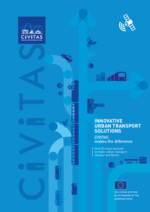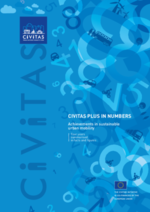
Tallinn (Estonia)
Tallinn is the capital of Estonia and with 400,000 inhabitants and an area of 159.2 km² the country’s largest city. Since Estonia gained independence in 1991, Tallinn has undergone drastic change, which the public transport system could not keep up with. The city is struggling with more and more traffic from private cars.
Tallinn is a medieval Hanseatic town, where mercantile life has always been bustling. It is Estonia’s centre of cultural, economic and higher education. Especially the old part of the city that has been declared a UNESCO world heritage site is well worth a visit. Together with Turku, Finland, Tallinn is a European Capital of Culture 2011.
An economic downturn after independence followed by rapid economic growth had a huge impact on the city and the structure of its transport system. The number of private cars increased so quickly that the development of the public transport network is now lagging behind. Between 1990 and 2000 public transport use fell from 250 to 94 million and the modal share decreased from 77 to 31 percent. The decline in the quality of public transport has affected virtually everybody in the city, but most of all women, children and elderly people who are most dependent on it. The massive shift to private car use and a large amount of through-traffic is taking its toll on the city and threatens to damage the beautiful old part of town.
Tallinn’s most pressing challenge is to renew and extend the public transport network including buses, trolleys, tramways and suburban trains. To this end, the city has developed a traffic development plan for 2005 – 2014. Tallinn’s participation in the CIVITAS MIMOSA project will boost the city’s efforts to meet the growing mobility demand in a sustainable fashion through a number of activities and with the support from international partners. Through MIMOSA, Tallinn wants to develop its Park & Ride network, implement a new public transport information and integrated ticketing system, and develop a marketing strategy to promote public transport, walking and cycling. Another task for the city is to flesh out a new strategy to meet the needs of freight traffic connected to the harbour.
As part of CIVITAS MIMOSA, Tallinn aims to half its CO2 emissions from transport. The bulk of the emission savings, around 40 percent, will come from the introduction of new cleaner vehicles. Another 10 percent will come from an eco-driving programme. The eco-driving campaign also intends to lower accident rates by 10 percent and accidents at remodelled pedestrian crossings are projected to decrease by 25 percent. Tallinn is drawing on its MIMOSA partner Bologna’s experience with cutting down on the misuse of bus lanes. The introduction of a new video surveillance system is projected to reduce illegal use of bus lanes by 70 percent. The city expects a 7 percent increase in the share of public transport through the promotion of collective transport.




















